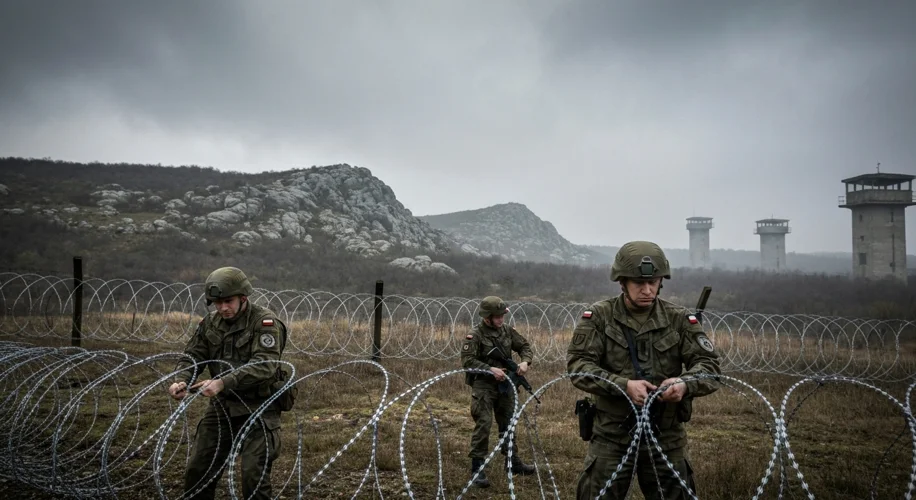The crisp autumn air of Eastern Europe often carries more than just the scent of fallen leaves; sometimes, it carries the unmistakable tension of geopolitical unease. As September 2025 draws to a close, Poland, a nation with a history deeply intertwined with the shadow of Russian influence, finds itself once again bolstering its border defenses. The catalyst? Anticipation of large-scale Russian military exercises near its frontier, a move that echoes disturbingly familiar patterns from the Cold War era.
For decades, the iron grip of the Soviet Union cast a long shadow over Eastern Europe. Nations like Poland lived under the constant, palpable threat of Soviet military might, their sovereignty a fragile veneer over a suppressed reality. The North Atlantic Treaty Organization (NATO), formed in 1949 as a bulwark against Soviet expansion, became the symbol of Western resistance. Its very existence was a promise of collective security, a deterrent against the ever-present possibility of aggression.
Now, in 2025, the specter of those tensions has returned, albeit in a different guise. The Russian military drills, often presented as routine readiness exercises, are viewed with profound skepticism by Poland and many of its NATO allies. These exercises, frequently involving thousands of troops, tanks, and aircraft, are seen not just as displays of military power, but as calculated provocations. They are a potent reminder of Russia’s willingness to project force and assert its sphere of influence, mirroring the very anxieties that defined the Cold War.

The decision by Poland to increase its border security is a direct response to this perceived threat. It’s a pragmatic, if somber, acknowledgment that history, in many ways, is repeating itself. The troop movements and equipment deployments are not merely defensive; they are a signal to Moscow, a clear message that Poland, as a member of NATO, will not be intimidated. This posture is crucial, as any perceived weakness could embolden further aggression, drawing parallels to the proxy conflicts and brinkmanship that characterized the Cold War.
The parallels are striking. During the Cold War, NATO and the Warsaw Pact engaged in a perpetual dance of military exercises, each side meticulously observing and reacting to the other’s moves. These drills, while ostensibly for training, served a dual purpose: to maintain combat readiness and to project power and resolve. Today, Russia’s exercises, often conducted with little transparency and sometimes on short notice, are seen by NATO as a deliberate effort to destabilize the region and test the alliance’s resolve. Poland’s preemptive strengthening of its defenses is a direct consequence of this ongoing strategic chess match.
The implications of this heightened tension extend far beyond Poland’s borders. The very foundation of NATO rests on mutual defense and collective deterrence. When one member feels directly threatened, it impacts the entire alliance. The increased military activity on Russia’s western flank demands vigilance from all NATO members, from the Baltic states to the Black Sea. It also raises the specter of miscalculation – a chilling echo of Cold War incidents where tensions flared dangerously close to outright conflict.
As these Russian drills commence, the world watches with a sense of déjà vu. The strategic posturing, the veiled threats, and the heightened military readiness are all too familiar. Poland’s decision to reinforce its borders is not just a national security measure; it’s a stark reminder that the echoes of the Cold War continue to reverberate, shaping the geopolitical landscape and demanding constant vigilance in the face of enduring, and evolving, threats.

